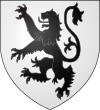
Duke of Norfolk is a title in the peerage of England, and is the premier non-royal peerage. The seat of the Duke of Norfolk is Arundel Castle in Sussex, although the title refers to the county of Norfolk. The current duke is Edward Fitzalan-Howard, 18th Duke of Norfolk. The dukes have historically been Catholic, a state of affairs known as recusancy in England.

Baron Hastings is a title that has been created three times. The first creation was in the Peerage of England in 1290, and is extant. The second creation was in the Peerage of England in 1299, and became extinct on the death of the first holder in c. 1314. The third creation was in the Peerage of England in 1461, and has been in abeyance since 1960.

Baron de Clifford is a title in the Peerage of England. It was created in 1299 for Robert de Clifford (c.1274–1314), feudal baron of Clifford in Herefordshire, feudal baron of Skipton in Yorkshire and feudal baron of Appleby in Westmoreland. The title was created by writ, which means that it can descend through both male and female lines. The Norman family which later took the name de Clifford settled in England after the Norman Conquest of 1066 and was first seated in England at Clifford Castle in Herefordshire. The first Baron served as Earl Marshal of England but was killed at the Battle of Bannockburn in 1314. His 8th generation descendant the 11th Baron, was created Earl of Cumberland in 1525, whose grandson the 3rd Earl was a noted naval commander. On the latter's death in 1605, the earldom passed to his younger brother, the 4th Earl.

Baron Wharton is a title in the Peerage of England, originally granted by letters patent to the heirs male of the 1st Baron, which was forfeited in 1729 when the last male-line heir was declared an outlaw. The Barony was erroneously revived in 1916 by writ of summons, thanks to an 1844 decision in the House of Lords based on absence of documentation. As such, the current Barony of Wharton could more accurately be listed as a new Barony, created in 1916, with the precedence of the older Barony.
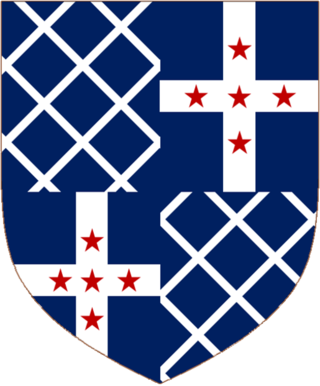
Baron Braye, of Eaton Bray in the County of Bedford, is a title in the Peerage of England. It was created in 1529 for Edmund Braye, 1st Baron Braye. However, the family originally originate from Normandy, they are direct descendants of Chevalier Baudry de Bray who came over to England in the Battle of Hastings of 1066. The family's local area in Leicestershire played host to two battles in England of note, the Battle of Bosworth Field where the current family's ancestor's were on opposing sides, and also Battle of Naseby during the First English Civil War, where the old manor house hosted King Charles I. The barony was created by writ, which means that it can descend through both male and female lines. He was succeeded by his son, the second Baron. He died from wounds received at the Battle of St Quentin in 1557. Lord Braye was childless and on his death the title fell into abeyance between his sisters.

Baron Dacre is a title that has been created three times in the Peerage of England, each time by writ.

Baron Stafford, referring to the town of Stafford, is a title that has been created several times in the Peerage of England. In the 14th century, the barons of the first creation were made earls. Those of the fifth creation, in the 17th century, became first viscounts and then earls. Since 1913, the title has been held by the Fitzherbert family.

Baron Strange is a title which has been created four times in the Peerage of England. Two creations, one in 1295 and another in 1326, had only one holder each, upon whose deaths they became extinct. Two of the creations, that of 1299 and that of 1628, are extant. The surname Le Strange was Latinized as Extraneus. The arms of Le Strange of Knockin Castle in Shropshire were: Gules, two lions passant argent.

Baron le Despencer is a title that has been created several times by writ in the Peerage of England.
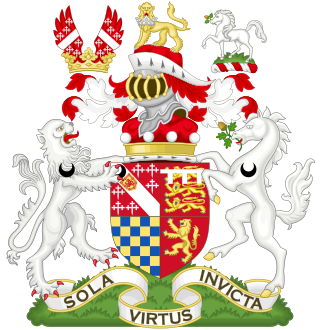
Baron Howard of Glossop, in the County of Derby, is a title in the Peerage of the United Kingdom, since 1975 a subsidiary title of the dukedom of Norfolk. It was created in 1869 for the Liberal politician Lord Edward Howard, the second son of Henry Fitzalan-Howard, 13th Duke of Norfolk. His grandson, the third Baron, married Mona Stapleton, 11th Baroness Beaumont. Their eldest son, Miles, succeeded his mother in the barony of Beaumont in 1971 and his father in the barony of Howard of Glossop in 1972. In 1975 he also succeeded in the dukedom of Norfolk on the death of his cousin, Bernard Fitzalan-Howard, 16th Duke of Norfolk. The two baronies are now subsidiary titles of the dukedom of Norfolk. See this title for further history of the peerages.
Baron Furnivall is an ancient title in the Peerage of England. It was originally created when Thomas de Furnivall was summoned to the Model Parliament on 24 June 1295 as Lord Furnivall. The barony eventually passed to Thomas Nevill, who had married the first baron's descendant Joan de Furnivall, and he was summoned to parliament in her right. Their daughter, Maud de Neville, married John Talbot, who was also summoned to parliament in her right. He was later created Earl of Shrewsbury. On the death of the seventh earl in 1616, the barony fell into abeyance. The abeyance was terminated naturally in favour of the earl's daughter Alethea Howard in 1651 and passed through her to the Dukes of Norfolk. On the death of the ninth Duke in 1777, the barony again fell into abeyance. In 1913 the abeyance was terminated again in favour of Mary Frances Katherine Petre, daughter of Bernard Petre, 14th Baron Petre. Through her father she was a great-great-great-granddaughter of the ninth Baron Petre and his first wife Anne Howard, niece of the ninth Duke of Norfolk, who became co-heir to the Barony on her uncle's death in 1777. On Lady Furnivall's death in 1968 the barony fell into abeyance for the third time.
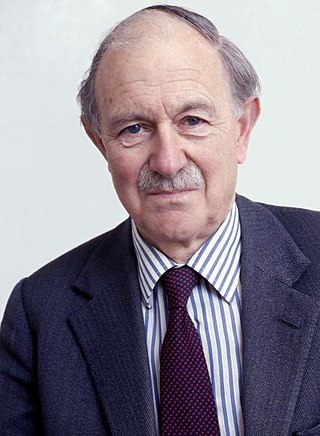
Major General Miles Francis Stapleton Fitzalan-Howard, 17th Duke of Norfolk,, known between 1971 and 1972 as the Lord Beaumont and until 1975 as the Lord Beaumont and Howard of Glossop, was a British Army general and peer. He was the eldest son of Bernard Fitzalan-Howard, 3rd Baron Howard of Glossop, and his wife Mona Fitzalan-Howard, 11th Baroness Beaumont.
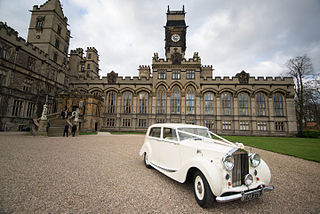
Carlton Towers in the civil parish of Carlton, 5 miles (8 km) south-east of Selby, North Yorkshire, England, is a Grade I listed country house, in the Gothic Revival style, and is surrounded by a 250-acre park.

Baron Wentworth is a title in the Peerage of England. It was created in 1529 for Thomas Wentworth, who was also de jure sixth Baron le Despencer of the 1387 creation. The title was created by writ, which means that it can descend via female lines.
Bernard Edward Fitzalan-Howard, 3rd Baron Howard of Glossop, was a British peer.
Mona Josephine Tempest Fitzalan-Howard, 11th Baroness Beaumont, Baroness Howard of Glossop, OBE was a British peer.
Anne Mary Teresa Fitzalan-Howard, Duchess of Norfolk, was a British peeress and humanitarian.

Bryan FitzAlan, Baron FitzAlan Knt. was Lord of the Manor of Bedale in Richmondshire, Askham Bryan in the Ainsty, Bainton, Heworth &c., in Yorkshire, Bicker and Graby in Lincolnshire, a J.P. &c. He was appointed a Guardian of Scotland on 13 June 1291, and was brother-in-law to King John Balliol of Scotland.
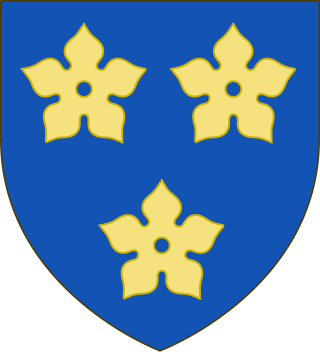
Baron Bardolf or Bardolph was a title in the Peerage of England.

The Stapleton baronetcy, of Carlton, Yorkshire, was created on 20 March 1661/2 Old Style for Miles Stapleton (1626–1707), the son of Gilbert Stapleton of Carlton.

